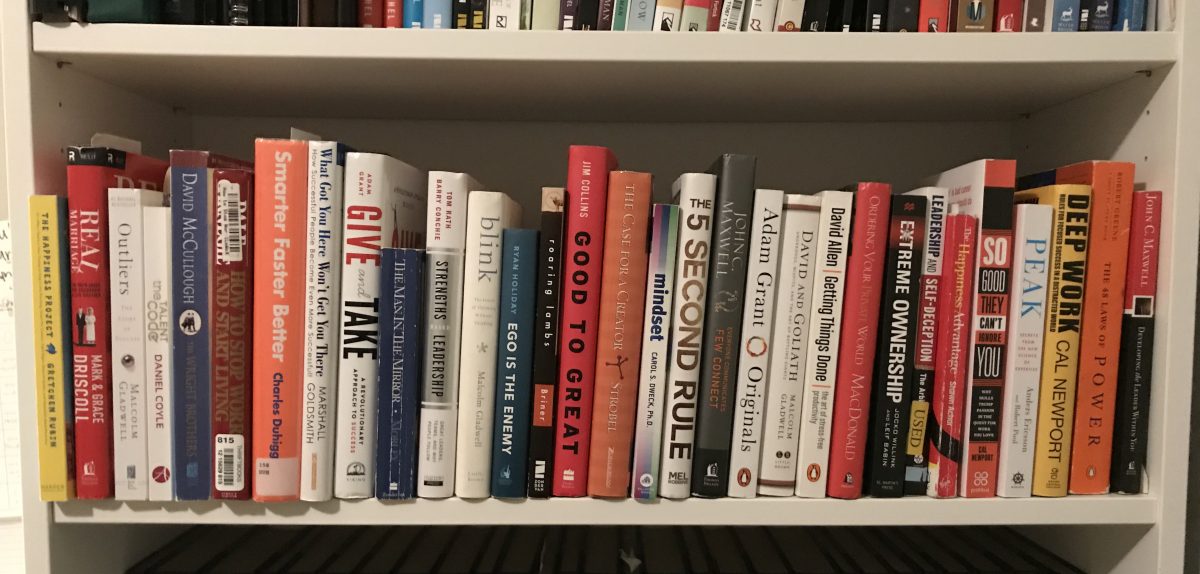I heard about Atomic Habits from a podcast I frequently listen to. The idea that you can change your life by implementing a few new habits sounds very sexy. Everyone desires something whether it is money, power, status, praise, approval, to lose weight, or be less stressed. The book title may give the same impression, but the reality that James Clear presents is very different. Clear shows how it is the 1% improvements that are not noticeable in the short run that change you in the long run. Can one small habit change your life? No, but consistently applying the right habits over time and adding new ones can transform you through small changes. That is why I love the meaning “atomic” from the title of the book. In one sense it is the smallest unit of matter but in another sense it is something with extreme energy and power.
Identity
One of the points which Clear makes is that we focus too much on the results, goals, and outcome we want instead of focusing on our identity. Start with your identity and work backwards from the results that you want to the type of person who gets those results. First decide the type of person you want to be and then prove it to yourself through small wins. Clear states “Many people walk through life in a cognitive slumber, blindly following the norms attached to their identity.” Instead of blindly following the norms, face life head on, decide who you want to be, and implement habits to become that person.
The steps
The crux of the book is defining what a habit is. Clear defines a habit as having 4 parts:
- Cue – our brains are constantly looking for rewards
- Craving – the desire to change our internal state
- Response – the actual habit
- Reward – the reason for our habit, satisfaction
Clear also develops the 4 laws of behavior change:
- Make it obvious
- Make it attractive
- Make it easy
- Make it satisfying
In order to break bad habit we must do the opposite:
- Make it invisible
- Make it unattractive
- Make it difficult
- Make it unsatisfying
My habit
As I read the book I came up with a number of new habits I wanted to implement and a few bad habits that I want to break. However, I realized if I try to accomplish all of them at once I will probably accomplish none. The single habit I landed on is my exercising. At the end of 2018 I trained for and ran a full marathon. Once I got into the habit of running it became “easy” for me to just look at my schedule and run the allotted miles for that day. Ever since I finished that race I have struggled to maintain an exercise rhythm since the goal I was training for is gone. I have a foggy notion of what I would like to do but until I make a concrete plan nothing will change. When Clear described how we must associate a time and location with our habit, things changed for me. I wrote down 5-6 workouts that meet my current fitness goals and wrote this statement in my notebook: I will do my pre-determined workout at 6pm in my garage after I get home from work. This is no longer foggy. I know what I am going to do, when I am going to do it, and where I will do it.
Action vs Motion
Another idea that helped me was the idea of action versus motion. Motion is the planning, strategizing, and learning that go into the habits we want. Motion can make you feel that you are getting a lot done but really is a form of procrastination. Action is the actual behavior that delivers and outcome. In order to master a habit you have to get in the repetitions. I find this happens a lot with my reading. I love to read, learn, and share what I have learned with others. However, there are many things that I read which I should put into practice but until I do so they remain motion. Someone told me it is ok to sharpen the sword but at some point you have to use it.
Don’t miss habits twice
Clear points out that when we are developing new habits in our lives we should never miss a habit twice. If you miss it once you can call it an accident but if you miss it twice you are starting a new habit. This concept is extremely important when habits get difficult like when you are tempted to miss a workout on days you don’t feel like working out. On those days when you follow through with the habit you reinforce the type of person you are. You string together and unbroken chain of performing the habit. It is like the brick layer who lays one brick each day with the goal of building a wall. If he consistently lays bricks each day, after many days he will have the wall. If he stops laying bricks because it’s too hard, he doesn’t feel like it, or he is not seeing any improvement, all he will have is a couple of bricks but no wall.
Atomic Habits provided me with a framework of how habits work, how to implement good habits, and how to overcome bad habits. James Clear does not pretend that there are any quick fixes and any good habits we want will come through long term thinking rather than short term thinking. He provides many insights on how to make the process easier & more effective. I highly recommend this book to anyone who wants to improve themselves, especially to people who feel stuck in their current routine and habits and know they need to change.

